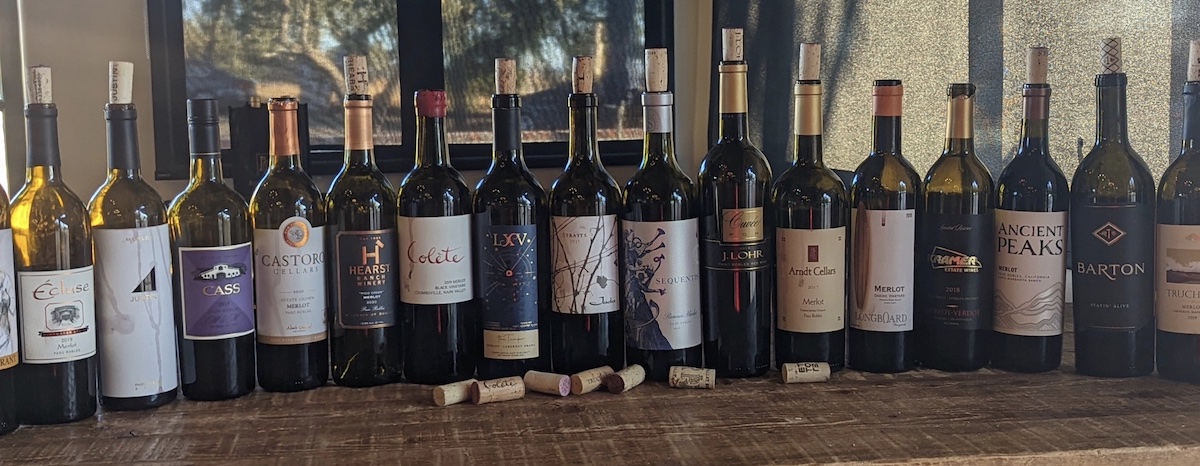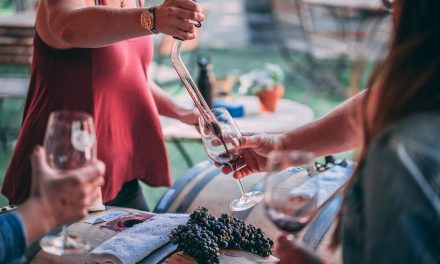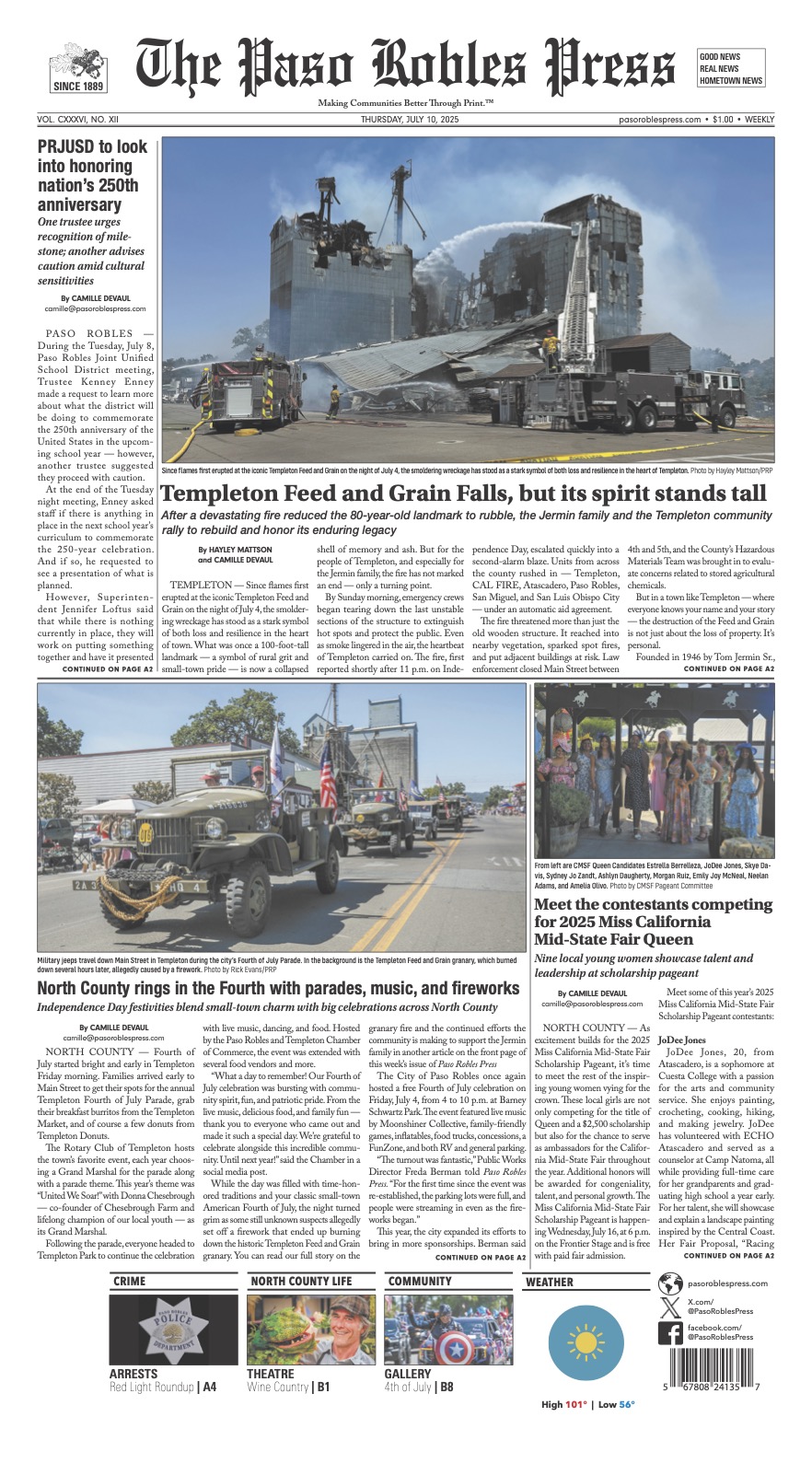“I like its versatility,” commented Soren Christensen, winemaker at Hearst Ranch Winery. “It’s agreeable and a bit of Jack of all trades when it comes to food pairing.” He was referring to merlot, a wine that has been on a rollercoaster ride in the last two decades: it was up, then down and in recent years on an upswing and gaining respect.
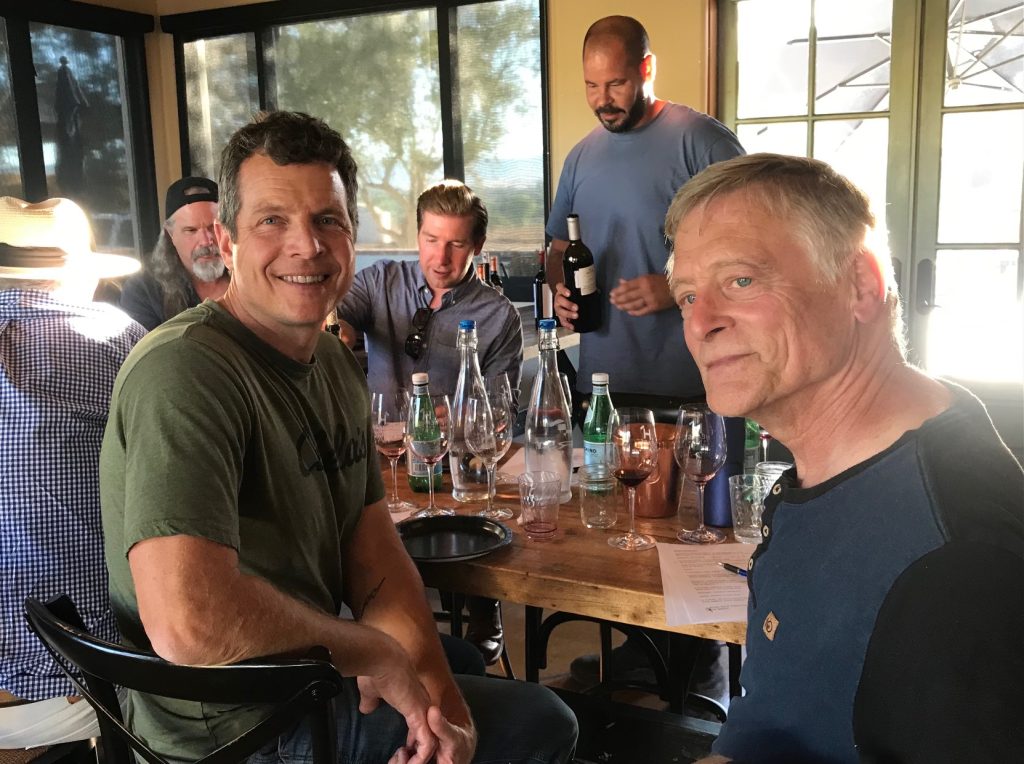
Photos: Mira Honeycutt
“It’s difficult to find exceptional merlot; everyone’s keeping it to themselves,” Christensen commented on the wine’s recent comeback and vintners opting to produce their own bottling of merlot instead of selling the fruit.
Christensen was among a small group of Paso winemakers gathered for a merlot tasting hosted by Hearst Ranch Winery at its North River Road tasting room in Paso Robles.
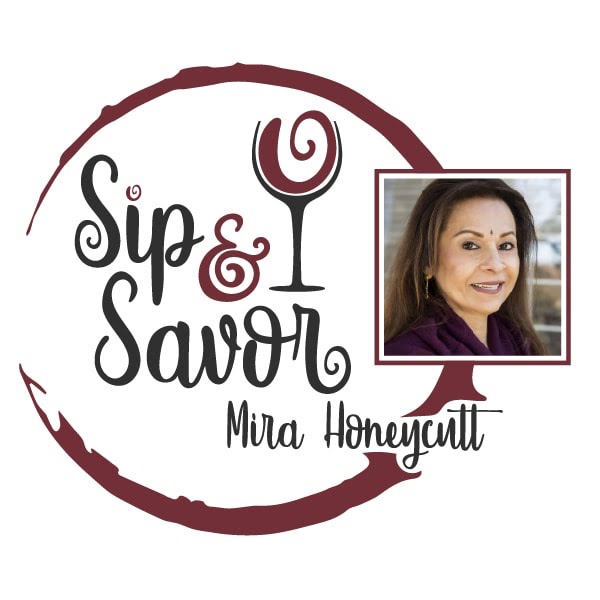
Christensen was joined by fellow merlot winemakers/producers, among them Tom Myers and Craig Reed from Castoro Cellars; Josh Harp of Jada Vineyard & Winery;Sterling Kragten from Cass Winery; Laura Kramer of Kramer Estate Wines; Don Arndt of Arndt Cellars; Bill Powell of Powell Mountain Cellars; and Neeta Mittal, owner of LXV.
We were there to mark #MerlotMe, a global movement that kicks off every October, culminating on November 7 as National Merlot Day. Now entering its tenth year, the movement was a brainchild of Napa Valley’s Duckhorn family, known for its high-end merlot.
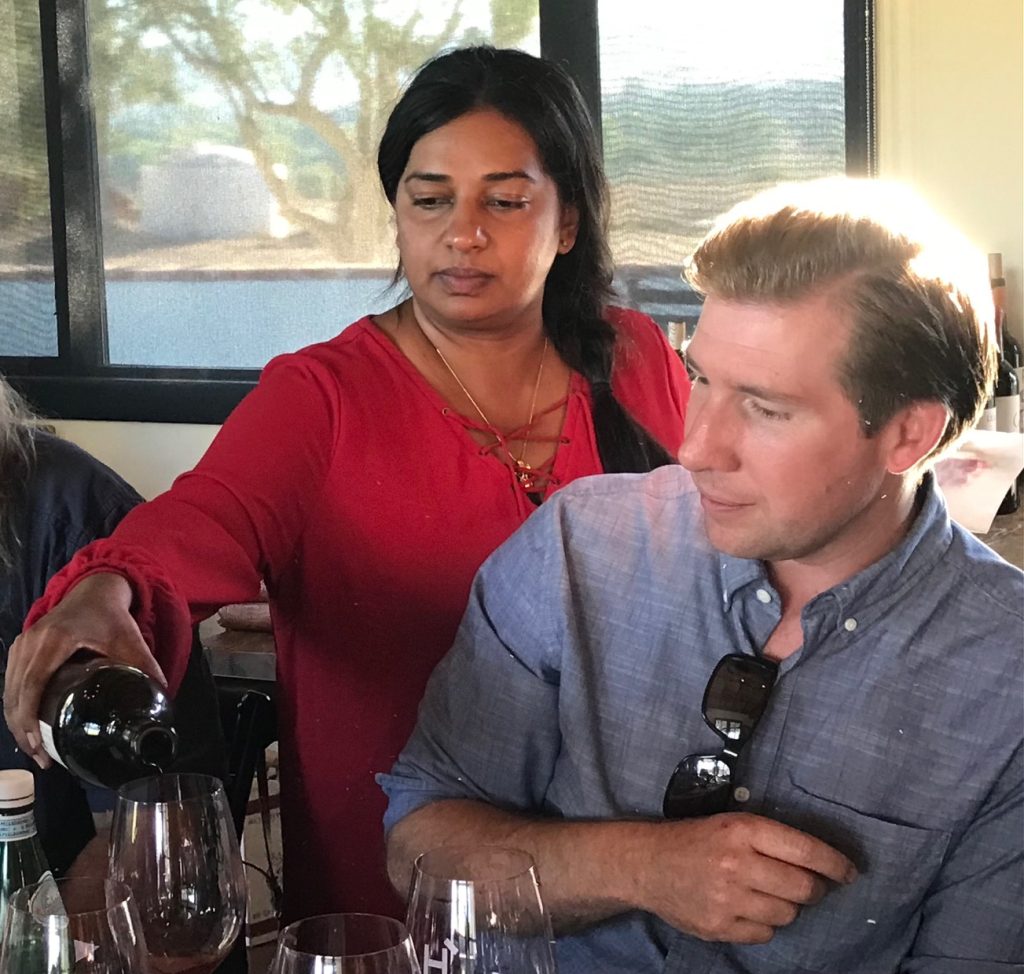
The afternoon tasting included bottlings of 100% merlot and merlot blends from Paso’s eastside and westside; muscle flexing mountain merlots from Napa Valley’s Mount Veeder and Howell Mountain regions and cool climate merlot from Napa’s Coombsville and Carneros appellations; then more from Sonoma’s Russian River Valley and Mendocino’s Hopland appellation.
Myers weighed in on the continuing identity of merlot, a variety commonly used in blending. Until the 1990s, merlot was not known as a varietal wine, Myers noted. “Cab was king,” he said referring to cabernet sauvignon. “Then it [merlot] took off. It was softer, marketable and had a broader appeal.” At Castoro, merlot planting didn’t begin till the late 1990s.
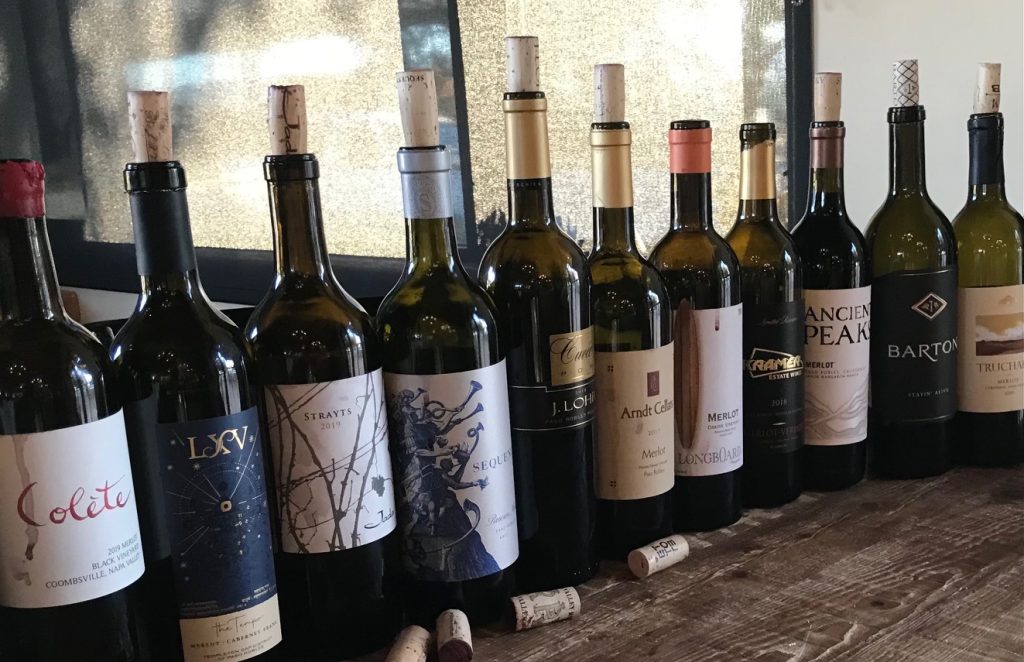
“Then we were hit by ‘Sideways’ and merlot took a back seat for a decade.” Myers was referring to the multi-award-winning film in which one damning bit of dialogue single-handedly brought merlot’s downfall.
“But we didn’t pull it out. We found a home for it,” Myers noted. We tasted Castoro’s caressingly lush 2020 vintage which was 82% merlot blended with equal portions of petit sirah and tannat and produced from multiple organic vineyards in the Estrella District.
And what is the popularity of merlot in local tasting rooms?
“We try to present it in the tasting room if they are non-merlot fans,” commented Harp. However, the Gen-Xers are getting into it, he said. Harp admitted that he got inspired when he joined Jada winery. “I love the richness of it and the natural baking spice,” he added, characteristics expressed in Jada’s 2019 Strayts from Willow Creek estate—a blend of 85% merlot co-fermented with 11% petite sirah and 4% petit verdot to give that firm tannin structure. The wine was aged for 15 months and bottled unfined and unfiltered.The 2020 Hearst Ranch was also 85% merlot supported by 12% cabernet sauvignon with traces of petit verdot and malbec adding a backbone to the wine.
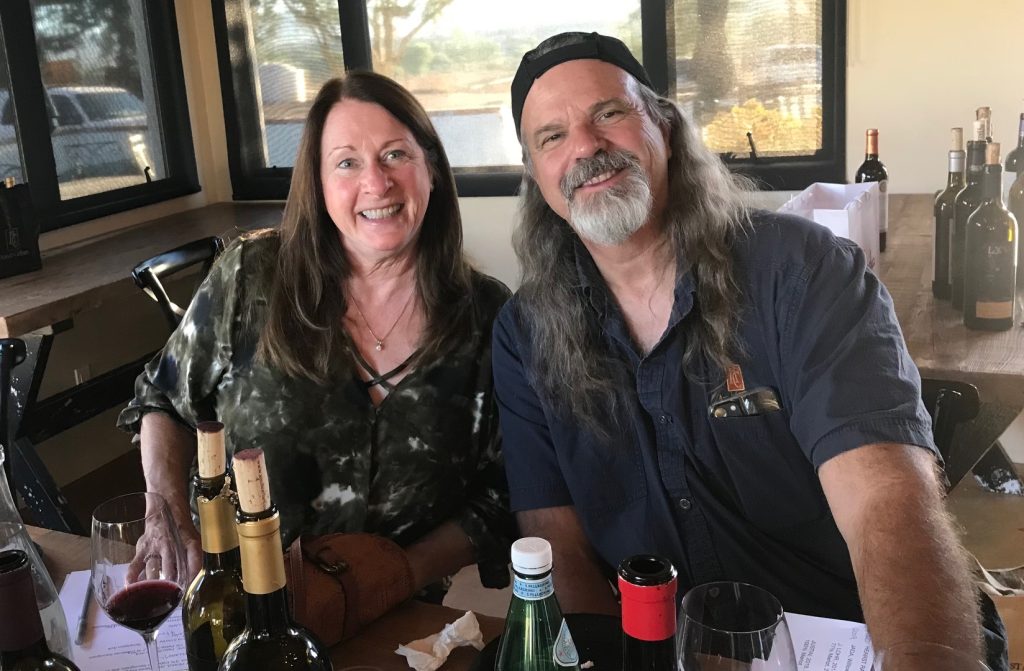
“I’ve always loved merlot,” announced Kragten, admitting that he traditionally blended it with cabernet sauvignon. But for his 2018 M&M, he chose 59% of malbec to blend with 41% of merlot. “It’s soft and delicate, a good marriage.” With a mere 400 annual-case production, the wine sells out fast, Kragten noted.
Arndt also makes a small production of just 70 cases of 98% merlot, topped with 2% of a variety he admitted that he couldn’t remember. Sourced from Penman Springs, the 2017 was a merlot lover’s dream, a rush of black cherries on the palate, framed by well-rounded tannins,
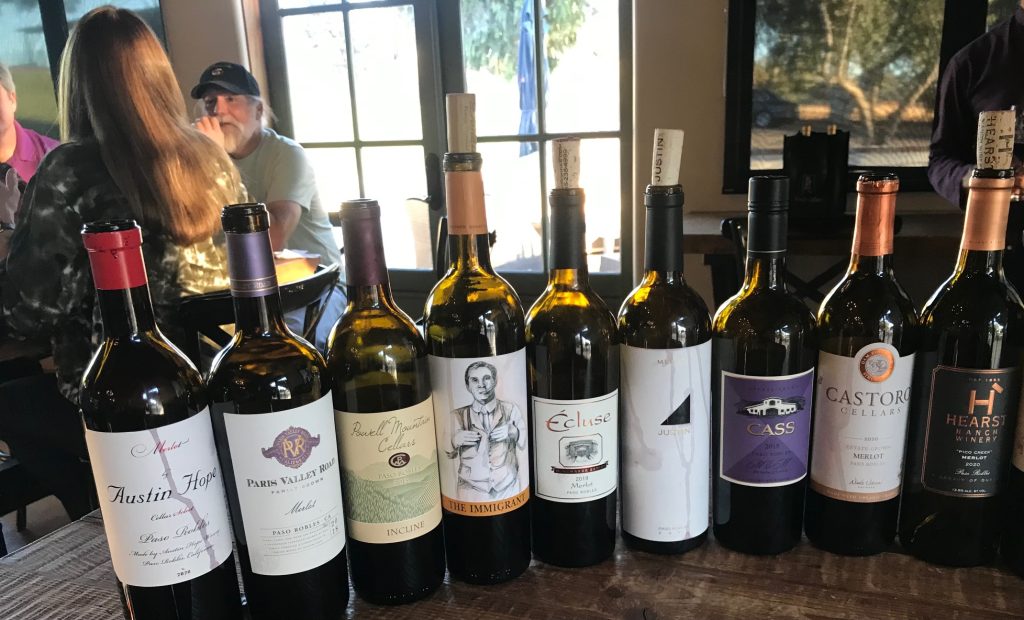
LXV’s 2020 The Tempo was a bolt of hedonistic pleasure. The 57% merlot blended with 43% cabernet franc showed a generosity of red fruits framed by bright acidity. Kramer’s 2018 Merlot-Verdot, was a plummy deep-hued 50/50 blend of merlot and petit verdot produced from the family’s San Miguel estate in the Estrella AVA.
Powell uncorked a 2013 vintage where 46% of merlot was joined by malbec, petit verdot and cabernet franc. The wine went through 34-month barrel aging and two years of bottle aging.
In addition to merlot-dominated blends, we tasted some 100% bottling. The Daou Family Estates’ 2020 Sequentis, was a carousel of black cherries, cassis and spicy currants with notes of toasted oak, The limited-release wine was aged for 18 months in 50% new French oak.
JUSTIN’s complex and full-bodied 2019 showed classic Bordeaux characteristics: a rush of red fruits on the palate backed by firm tannins. The 100% merlot was aged for 20 months in 20% new French oak.
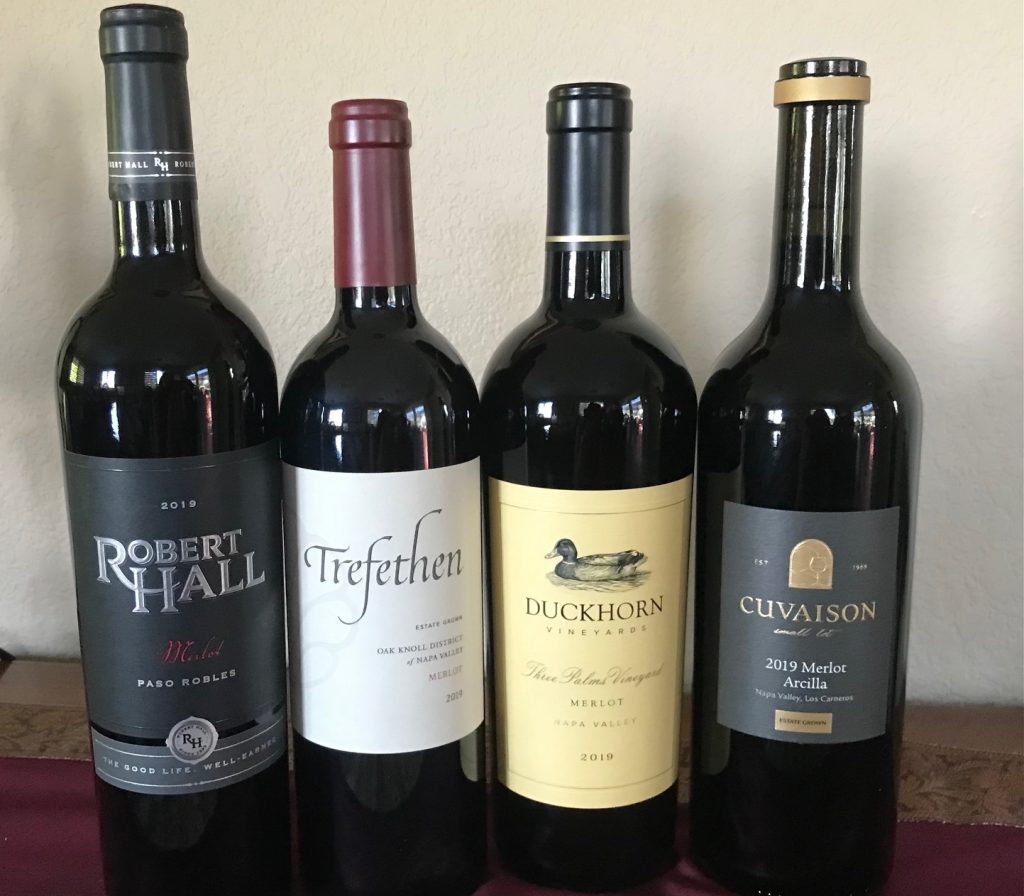
2019 Barton Family Wines’ Stayin’ Alive, a nod to merlot’s staying power, was produced from Joe Barton’s one-acre merlot planting at Clare Ranch in the Templeton Gap AVA.
There were two 2019s from Donati Family Vineyards of 100% merlot, one from Paso Robles and the Immigrant from Paicines AVA in San Benito County. Other impressive Paso merlots included Écluse, Austin Hope, Ancient Peaks, Pear Valley, Robert Hall and J.Lohr’s Cuvée POM, an homage to Bordeaux’s Right Bank wine style.
From Napa Valley, Duckhorn Vineyards’ Three Palms Vineyard merlot continues its iconic status since it debuted with the 1978 vintage. Age-worthy and intense the 2019 was luxurious on the palate with a balanced minerality.
Trefethen is another Napa estate known for its merlot. The variety was part of the portfolio in its pioneering planting back in the 1960s and the family has continued its commitment to merlot through the years. The 2019 from Oak Knoll District was seductively perfume with a blast of fresh red fruits on the palate.
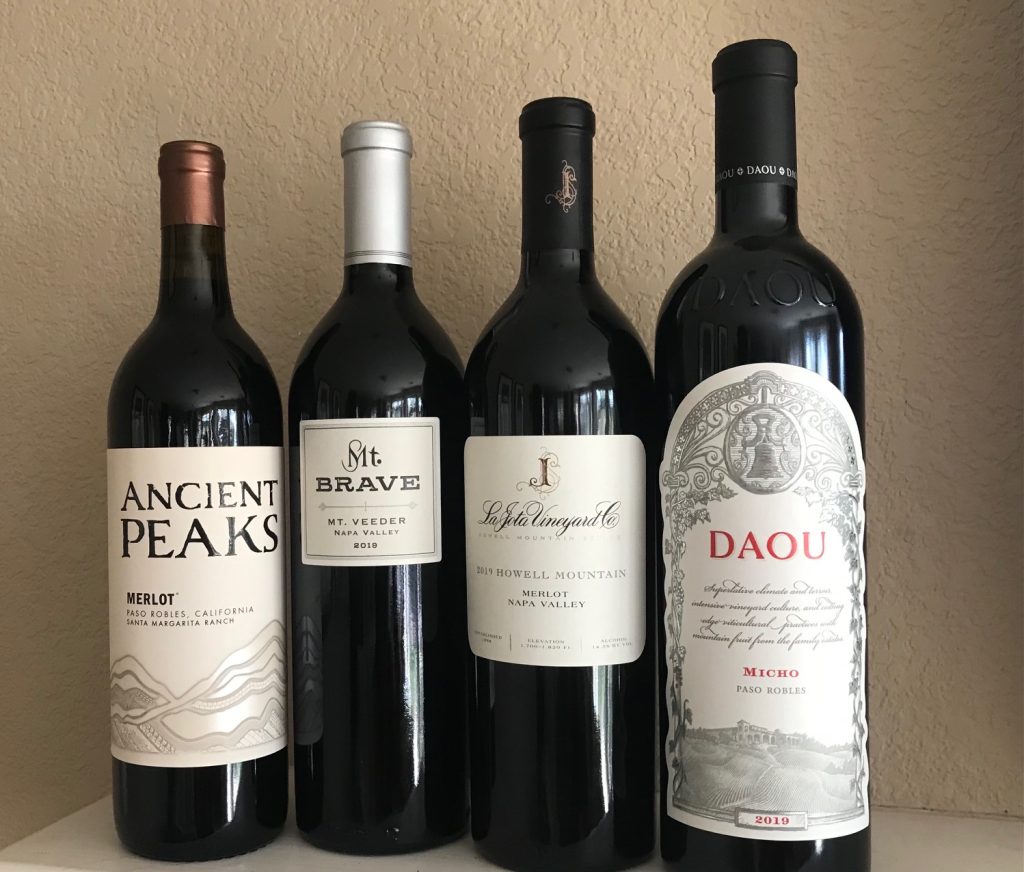
From the mountain terrain of Mt. Veeder, the 2019 Mt. Brave was bold yet elegant, displaying a luxuriously flavorful finish. The 2019 La Jota Vineyard Co. was another dense and rich merlot grown in the volcanic soils of Howell Mountain. Both wines show promising cellar-worthy characteristics.
Napa’s Cuvaison known for Pinot Noir and Chardonnay in the Carneros appellation, produces an excellent merlot. The 2019 Arcilla, so named after the namesake clay soils, which imparts the gentle earthiness to the wine was framed with warm spices; and Truchard Vineyards’ cedar-scented merlot blended with cabernet franc that was a sensory explosion of bright red fruits.
From Napa’s Coombsville appellation, we savored the 2019 unfined and unfiltered Colete, redolent with botanical notes. The wine was fermented with native yeast. Ringing with wild strawberries and soft tannins, the 2018 Ettore Zero from Mendocino’s Hopland appellation was organically farmed and produced with zero sulfites.
Based in Sonoma’s Russian River ValleyLongboard Vineyards’ 2018 Dakine vineyard-designate was a lush field blend of merlot and malbec, redolent of violets and dried herbs.
Merlot is one of the most widely planted grapes on the globe and the third leading wine purchased by Americans after cabernet sauvignon and red blends, according to The Wine Institute. So, this October, give merlot a chance.
Merlot responsibly

